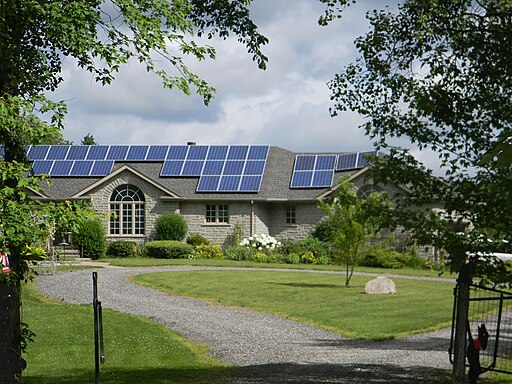Squish Like Grape
You are here
Does Rooftop Solar Kill Jobs and Hurt the Poor?
Primary tabs
To hear some people talk, the growing popularity of solar energy is tantamount to a war on coal that will damage the American economy, kill jobs, and burden the poorest citizens.
In reality, we need not invoke a conspiracy against coal to see why fossil fuels are on the decline. The cost of solar power has dropped by more than 90% over the last four years. Ten states have reached grid parity--the point at which it is as cheap to make electricity from solar as from coal--and Deutsch Bank projects that number could grow to as many as 47 states by the end of next year. Add to that the fact that solar panels almost never need maintenance, and coal suddenly looks expensive.
Despite the potential cost savings, electric utilities have been slow to jump on the solar bandwagon, and that has afforded individuals and businesses an opportunity to install their own solar panels and save on their electricity bills. In many places, they are able to sell excess electricity back to the utility company, a practice known as net metering. Altogether, rooftop solar installations have contributed more than 18 million megawatt-hours to the grid in the last two years alone.
All of these installations have led to a thriving solar industry. 31,000 new solar-related jobs were created last year, and this year the industry expects to create 36,000 more. That will bring the nationwide total to more than 200,000 full-time jobs, more than twice as many as the coal industry. And solar is just the tip of the renewable iceberg. Another 200,000 people work in the hydropower industry, as well as 120,000 in the biodiesel and ethanol industries, 75,000 in the wind industry, and more than 5,000 in the geothermal industry. That's a total of 600,000 jobs related to renewable energy. The coal industry employs about 80,000 people, and is shrinking annually.
But renewable energy is just gettting started. In 2013, the most recent year for which complete data is available, all forms of renewable energy combined accounted for only about 13% of all electicity generation in the United States. And even though solar-powered electricity generation doubled in 2014, it still accounts for less than 1% of all electricity generation, leaving a lot of room for growth. Even if we ignore the environmental impact and focus solely on the job market, solar power looks like a big winner.
But what about the allegation that solar power hurts poor people? That's a more complex issue. At its heart is the fact that although net metering seems like a simple solution to excess solar electricity generation, it carries some unexpected consequences that make life more difficult for the electric utilities--and for users of the grid.
As a for-profit business, the utility must set the retail price of electricity high enough to cover its fixed expenses such as grid maintenance. But by allowing customers with rooftop solar to run their meters backward, the utility is essentially buying the electricity from them at full retail price, then delivering it to other customers for the same price. To cover its fixed costs, the utility must raise its rates for customers without solar panels. According to a report by California's state utility regulatory agency, net metering will cost California residents without solar installations an extra $287 annually by 2020. That's not a huge amout, but it really could be burdensome for a family struggling to get by.
Solar advocates point out that renewable energy brings other benefits--cleaner air, a healthier job market, and more reliable electricity--even to people who don't have their own solar panels. But while that is undoubtedly true, clean air does not put food on the table.
Is there a better solution?
One option, pioneered by the city of Austin, Texas, and adopted by the state of Minnesota, is the concept of a "value of solar tariff" (VOST). This tariff allows solar customers to get a refund when they produce extra electricity, but instead of simply rolling back their meters, the tariff pays them based on a formula that factors in the cost of grid maintenance as well as solar's intangible benefits. If the VOST is calculated correctly, the utility will pay exactly what the electricity is worth to it. In Austin the numbers have already needed tweaking to account for changes in supply and demand, but all sides appear to be satisfied with the tariff model.
Solar power is the future of electricity, and rooftop solar will likely be a big part of that future. Fossil fuels are going the way of the dinosaurs from which they were formed, and the centralized power plant that supplies an entire city is likely going the same way. It's not a question of whether the old model will be replaced; the question is how. Finding a solution that all sides can agree on--whether it's VOST or another model--will speed the demise of fossil fuels, and that truly will benefit rich and poor alike.
Theme by Danetsoft and Danang Probo Sayekti inspired by Maksimer



